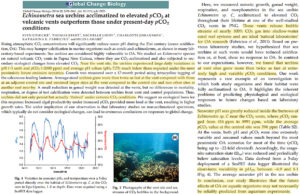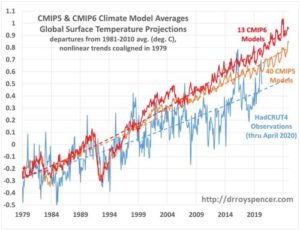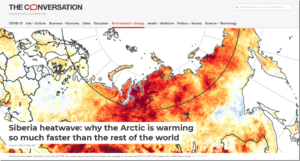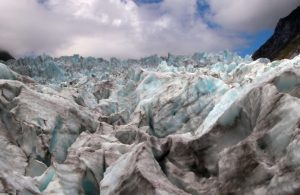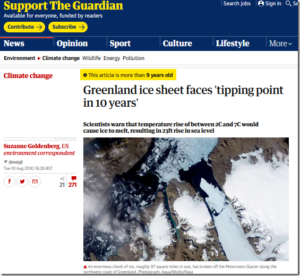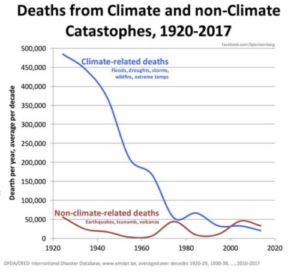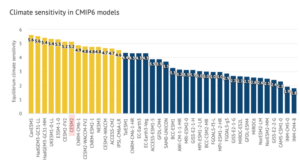by C. Rossiter, December 17, 2019 in CO2Coalition
…
Memo to the Media: Don’t Use Bad Words!
13 misleading phrases about industrial warming gases and policies to slow their increase.
By: Dr. Caleb Rossiter, Executive Director of the CO2 Coalition
1. Climate change (as in “climate change is real”): Climate change is indeed real, and humans have little to do with it.
What is the specific change you have in mind? Is it a typical fluctuation or a statistically significant trend? Is it caused by an increase in average temperature, locally or globally? Is the increase driven by CO2 levels, or natural causes? The scientific answer to each of these questions is usually complex, uncertain, and not alarming at all.
2. Climate “crisis” (or “emergency”): There is no climate crisis or emergency.
UN IPCC data show no statistically significant trends in “crisis” variables like storms, floods, hurricanes, droughts and rate of sea-level rise in the last 100 years. That is before CO2 emissions could have had a measurable impact on temperature.
3. “A consensus (of 97% of scientists) agrees”: Agrees about precisely what?
This has nothing to do with claims of a “crisis,” or with the potential of “renewable” energy. The “consensus” was declared by non-scientists, who judged the content of articles in science journals – often incorrectly. They tried to determine whether the articles agreed with the IPCC opinion that at least 0.25 of the 1°C rise in global average temperature since 1900 was likely caused by industrial CO2 emissions.
4. “It’s already happening”: This confuses climate with weather.
Climate – a statistical average – is what we expect; weather – random and often extreme fluctuations – is what we get. Hurricanes Harvey, Andrew, Sandy, and Katrina, California wildfires, regional droughts and floods, and sea-level rise are all almost entirely natural. Similar events occur in historical records going back millennia.
5. “(X out of the Y) warmest months, years, decades on record have occurred recently”: This has been true throughout the past 250 years, for natural reasons.
Temperature has been rising slowly and steadily since the Little Ice Age, well before CO2 levels increased. Slightly higher records are to be expected.
6. CO2 emissions are causing “ocean acidification”: The ocean will never become acidic (i.e. below “neutral” 7 on the pH scale).
Sea water is alkaline, not acidic, with a pH of around 8. A one-unit change to 7 on this logarithmic scale would require a 10-fold increase in pH. Even a tripling of current CO2 levels, over 600 years, would drive pH down only to 7.8. Rainwater is naturally acidic, at 5.6. Ocean health is improved by the plant and phytoplankton food: CO2.
7. “Carbon pollution”: CO2 is not a “pollutant” but an essential plant food.
A pollutant damages human health. CO2 is an inert, natural, non-toxic, mild warming gas. The rise of CO2 levels from 0.03% of the atmosphere to 0.04% has increased plant growth by a third. Human breath has 100 times this level. EPA does not list CO2 as a “criteria pollutant,” like carbon monoxide (CO) from cars and sulfur dioxide from power plants. Ironically, catalytic converters remove these real pollutants by oxidizing them to CO2.
8. Social Cost of Carbon (SCC): There is a far greater cost to using “renewables.”
The current SCC of $40 in damages per metric ton of CO2 is based on 300-year projections of the economy and CO2-driven extreme weather. Both are wildly uncertain. At present the true cost of wind and solar is four times that of fossil fuels, per mile of travel and per kilowatt-hour of electricity. The SCC ignores these costs.
9. Renewable Energy: Converting it to power is NOT renewable.
Wind and solar are free and renewable but using them is not. The costly turbines, solar panels, batteries, and transmission lines must be mined, produced, transported, and disposed of after their short lifetimes. What powers those industries? Reliable, cheap fossil fuels.
10. “Highest CO2 levels in (thousands, millions) of years”: Correlation is not causation.
Al Gore tried to convince movie-goers that CO2 and temperature “go together.” Indeed, they do, but on these time scales, it is temperature that drives CO2. As the Earth has warmed and cooled over the past million years of recurrent ice ages, changes in CO2come long after changes in temperature. That’s because CO2 is released from warming oceans and land and is absorbed again when they cool.
11. “Climate models predict…”: No, IPCC computer estimations “project scenarios”
The IPCC’s models run about three times too “hot.” Why? Because they “tune” the models to make past CO2 levels drive temperature changes. Nature hasn’t cooperated with their theory of strong warming when the models are run into the future. The models require thousands of guesses about physics and economics, and their error bands are bigger than their projected temperature results.
12. “Exxon Knew”: That alarmist science was uncertain.
The #ExxonKnew lawsuits are based on a fraud: the plaintiffs and their advocates cynically edit Exxon’s scientific memos before quoting them, removing key words and phrases. This reverses the scientists’ conclusions, because they were summarizing alarmist predictions and explaining their uncertainties.
13. “The debate is over”: See 1-12, above.
A PDF of this memo can be downloaded at Memo to the Media.

